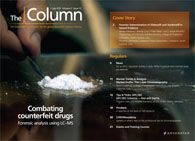SIC vs HPLC
As a separation technique, it is claimed that sequential injection chromatography (SIC) has a number of advantages over HPLC, but also suffers from some limitations.
As a separation technique, it is claimed that sequential injection chromatography (SIC) has a number of advantages over HPLC, but also suffers from some limitations. A new study claims to have overcome these limitations, offering a method that is faster, more sensitive and uses less reagent than HPLC methods.1
The joint use of sequential injection analysis and monolithic columns facilitated SIC, which claims advantages over HPLC regarding simplicity, inexpensiveness, portability, ease-of-use, maintenance requirement and operation time. Unlike HPLC, SIC applies a miniaturized discontinuous flow-based procedure, therefore it is reported to be more reagent-saving than HPLC, rendering SIC methods inexpensive, as well as providing better safety for the environment. However, SIC does suffer from a number of drawbacks; it has a limited pressure tolerance, which causes solution leakage when applying high flow-rates, adopting a mobile phase including a buffer or installing long monolithic columns.
The new study has overcome some of the limitations with a new SIC assembly and method. By installing a valve with a higher pressure tolerance and additional ports the system avoided the problem of solution leakage. The SIC method was reported to offer advantages over the HPLC methods with respect to rapidity, reagent consumption and safety for the environment, besides the other benefits of the instrumentation of SIC over HPLC.
1. A.M. Idris and R.E.E. Elgorashe, Chemistry Central Journal, 5(28) (2011).
This story originally appeared in The Column. Click here to view that issue.
New Study Reviews Chromatography Methods for Flavonoid Analysis
April 21st 2025Flavonoids are widely used metabolites that carry out various functions in different industries, such as food and cosmetics. Detecting, separating, and quantifying them in fruit species can be a complicated process.
Quantifying Terpenes in Hydrodistilled Cannabis sativa Essential Oil with GC-MS
April 21st 2025A recent study conducted at the University of Georgia, (Athens, Georgia) presented a validated method for quantifying 18 terpenes in Cannabis sativa essential oil, extracted via hydrodistillation. The method, utilizing gas chromatography–mass spectrometry (GC–MS) with selected ion monitoring (SIM), includes using internal standards (n-tridecane and octadecane) for accurate analysis, with key validation parameters—such as specificity, accuracy, precision, and detection limits—thoroughly assessed. LCGC International spoke to Noelle Joy of the University of Georgia, corresponding author of this paper discussing the method, about its creation and benefits it offers the analytical community.












